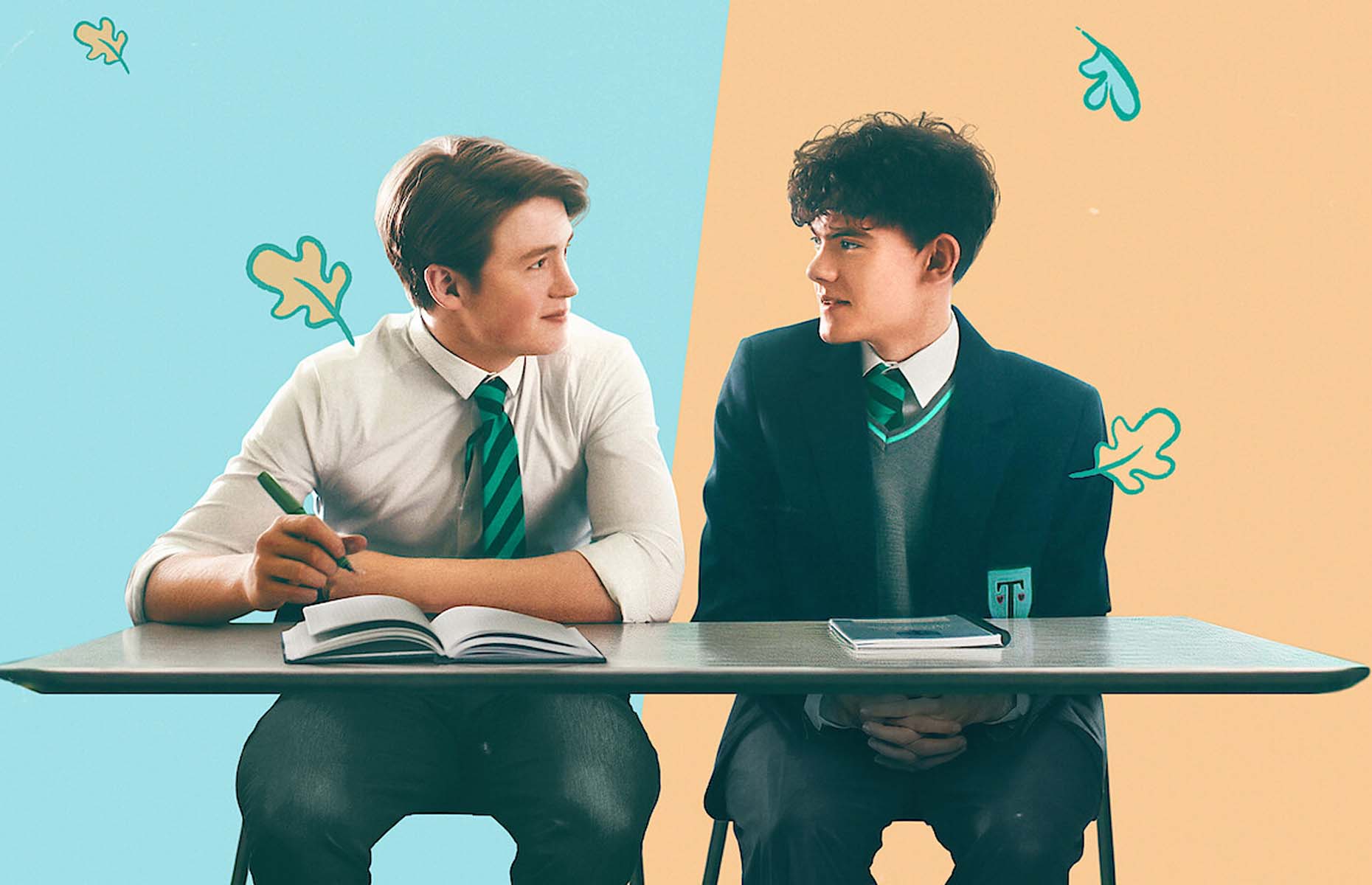Disclaimer: Heartstopper Season One spoilers
TW: mention of rape, abuse, and homophobia
Like many, I have spent the last few weeks captivated by Netflix’s Heartstopper and its representation of an innocent queer romance — something almost completely unseen in the media.
Compared to how shows like Young Royals (2021—) and Euphoria (2019—) handle LGBTQ+ narratives, Heartstopper is unique in its light-hearted image of queerness.
Released on 22 April, Heartstopper focuses on Nick and Charlie; two high schoolers navigating queerness and the beginnings of a relationship, alongside an ensemble of diverse characters experiencing similar struggles. Based on the best-selling graphic novel series by Alice Oseman, it is an embrace of pastel colours and indie-rock music that centres romance, not sex or heartbreak, within the queer teen experience.
While Young Royals and Euphoria both engage with the concerns of LGBTQ+ teens, they do so in a way that is overly adult, dramatised, and often tragic. In Euphoria, Jules, a trans girl, arranges casual sex with predatory men on Grindr and, in Young Royals, Wilhelm’s role in the Swedish royal family makes his gay romance one of ‘forbidden’ and ‘scandalous’ love. These portrayals, although more sympathetic than many that precede them, echo the prominent ‘kill your gays’ trope and propagate an image of queer teenagers as ashamed, fearful, and ripe for sexual exploitation. Older works like Mysterious Skin (2004) further relate the queer teen experience to danger and trauma, specifically childhood abuse, rape, and AIDS.
Heartstopper actively resists the opportunity to sexualise its queer characters; there is no mention of first times, older sexual mentors, or even heated make-out sessions. These characters actually feel like teenagers — maybe because the average age of their actors is 18 (Kit Connor and Joe Locke, who play Nick and Charlie, famously completed their A-level exams when the show was released).
A scene where Nick tries to hold Charlie’s hand is particularly reflective of this innocence. Emulating the comic book’s graphic style, animated sparks and a soft yellow glow appear between their hands, demonstrating his exhilaration at his first move on a schoolyard crush. Charlie’s disbelief when learning that Nick likes him back is equally authentic to the doubts that define early relationships — particularly queer ones. These moments communicate a love story that is quintessentially teenage, expressing the innocence and awkwardness that come with inexperience — a narrative often absent in queer media.
Heartstopper was also the first time I saw a character like Elle – a trans girl of colour – facing ‘normal’ challenges like making friends at a new school, or having a crush on a friend. She does not dramatically take off her makeup and cry, or face bullying, though these struggles are alluded to. She is a queer character whose hardships are not cause for shame or social isolation. The same can be said for lesbian characters like Tara and Darcy, whose experiences with homophobia are secondary to the security provided by their relationship. The seriousness of shows like Euphoria or Mysterious Skin is replaced with a childlike optimism; the message that queer youth, like their straight counterparts, are allowed to be children.
For this reason, watching Heartstopper left me with mixed feelings. When Michael Chakraverty of the Great British Bake Off tweeted “obviously I adored heartstopper but I’ve been completely consumed by this strange melancholy about it ever since,” I related. Perhaps selfishly, I am mourning the loss of a childhood I never had.
Like many queer people, my teenage years were marked by shame and adultness. Instead of schoolyard crushes, I had blurry escapades clouded by drugs and alcohol. When my straight friends discussed their celebrity crushes, I did not. I remember policing my behaviour for years in an environment where my sexuality was sidelined as deviant. I am far from alone in these experiences. In her doctoral thesis, Stacey Hemmings reveals how her interviewees felt pressure to “kill” elements of their queerness. Sex was “hidden”, anonymous, and held little prospect for future intimacy. Likewise, gay teens are, more than any other demographic, found by Parkes and her colleagues to have had unwanted sexual experiences during adolescence. These facts are not surprising considering LGBTQ+ youth in Australia are over three times as likely to report high levels of psychological distress than straight teens.
I guess I’m sad because Heartstopper showed me what my life could have been.
At the same time, I am not advocating for the erasure of cultural works that explore the darker elements of queer childhoods. My younger self felt oddly represented by Mysterious Skin, and I genuinely believe that Euphoria and Young Royals are paving the way for today’s teens to explore themselves. Their portrayal of queer suffering is still reflective of the experiences of many, especially those facing intersectional burdens like racial or economic marginalisation. They also represent what was, for most of history, a life defined by pain and rejection.
However, it is not surprising that by linking queerness to bullying, sex, and HIV, these shows make us think that there is no alternative to these tragedies. What I am suggesting, then, is that LGBTQ+ representation expands to include the innocence often denied to queer teens.
For me, Heartstopper is this representation.
Although I’m a little jealous, I’m grateful today’s queer teens feel that they may live like Nick, Charlie, Elle, Darcy, and Tara. I hope this media allows them to see in themselves the potential to be happy. I hope they can feel the childhood innocence earlier generations did not have.
I don’t think I realised how important this representation was until I watched Heartstopper. Either way, it shows us that we deserve more than the tragedies we were taught to expect on screen — and in our own lives.





